Table of content
Bao buns, also known as Chinese steamed buns, are a beloved staple in Asian cuisine. These soft, fluffy pillows of dough, often filled with savory or sweet fillings, have captured the hearts and palates of people worldwide. Whether you’re a seasoned home cook or a curious beginner, mastering the art of steaming bao buns requires precision, patience, and an understanding of the science behind the process. One of the most frequently asked questions is: How long should bao buns be steamed? This article delves into the intricacies of steaming bao buns, exploring variables that affect cooking time, techniques for achieving perfect texture, and troubleshooting common pitfalls. By the end, you’ll be equipped to create restaurant-quality bao buns in your own kitchen.
The Basics of Bao Buns
Before diving into steaming times, it’s essential to grasp the fundamentals of bao bun construction. Bao buns are made from a simple dough of flour, water, yeast, and sometimes baking powder or sugar. The dough is kneaded until smooth, then left to rise until doubled in size. After punching down and portioning, each piece is rolled into a disc, filled with ingredients like seasoned pork, vegetables, or red bean paste, and sealed tightly. The shaped buns are then proofed a second time before steaming.
The two primary categories of bao buns are steamed buns with fillings (such as char siu bao, or barbecue pork buns) and plain steamed buns (mantou), which are enjoyed plain or with dipping sauces. While the steaming process is similar for both, filled buns may require slight adjustments in time due to the additional moisture and density from the filling.
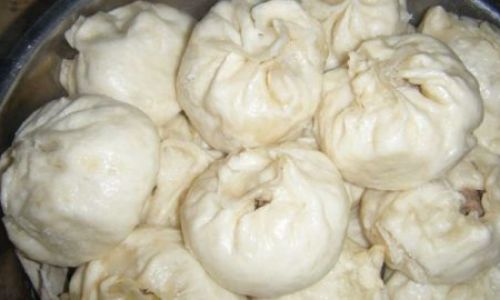
Factors Influencing Steaming Time
The ideal steaming time for bao buns isn’t a one-size-fits-all answer. Several variables come into play, including:
- Size and Thickness: Larger buns or those with thicker dough will take longer to cook through. Miniature bao buns (like those served as appetizers) might need only 8–10 minutes, while larger ones could require 15–20 minutes.
- Filling Type: Meat-filled buns, especially those with dense ingredients like pork belly, may need extra time to ensure the filling is fully cooked. Vegetarian fillings, on the other hand, might steam faster.
- Dough Hydration: Doughs with higher water content tend to be softer and may cook slightly quicker than drier doughs.
- Steaming Equipment: The material and size of your steamer, as well as the heat source (stovetop, electric, or bamboo steamer), can affect cooking time. Bamboo steamers, for example, retain moisture well but may require slightly longer times compared to metal steamers.
- Altitude: At higher elevations, water boils at lower temperatures, which can extend steaming time. Adjustments may be necessary if you live in a mountainous region.
General Steaming Guidelines
For most standard-sized bao buns (about 3–4 inches in diameter), the typical steaming time ranges from 12 to 15 minutes. However, this is a starting point. Here’s a step-by-step breakdown of the steaming process:
- Preheat the Steamer: Fill your steamer with water (about 2–3 inches deep) and bring it to a rolling boil over high heat. Ensure the water level is below the steamer basket to prevent sizzling and splashing.
- Prepare the Buns: Line your steamer basket with parchment paper or a clean kitchen towel to prevent sticking. Alternatively, use perforated parchment liners designed for bao buns.
- Arrange the Buns: Place the shaped, proofed buns in the steamer basket, leaving at least 1–2 inches between them to allow for expansion. Avoid overcrowding, as this can lead to uneven cooking.
- Steam: Once the water is boiling, reduce the heat to medium-high to maintain a steady simmer. Cover the steamer with its lid and set a timer.
- Check for Doneness: After the initial steaming time, carefully remove one bun and test it. The dough should feel springy to the touch, and the internal temperature (if using a thermometer) should reach at least 190°F (88°C). For filled buns, ensure the filling is piping hot.
- Resting Period: After steaming, turn off the heat and let the buns rest in the steamer for 3–5 minutes with the lid slightly ajar. This prevents sudden temperature changes that could cause the buns to collapse.
Adjusting Steaming Time for Specific Scenarios
Frozen Bao Buns
If you’re steaming frozen bao buns (store-bought or homemade), extend the steaming time by 3–5 minutes. There’s no need to thaw them first—simply place the frozen buns directly into the steamer and add extra time to ensure thorough heating.
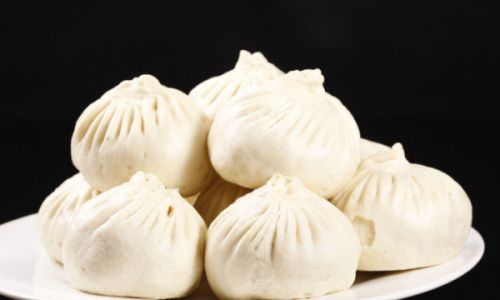
Gluten-Free or Alternative Flour Bao Buns
Bao buns made with gluten-free flours (like rice flour or tapioca starch) or alternative grains (e.g., whole wheat) may behave differently. These buns often require 1–2 minutes less steaming time, as they can become gummy if overcooked. Keep a close eye on them to avoid mushiness.
High-Altitude Adjustments
At elevations above 3,000 feet (914 meters), reduce the heat slightly and increase steaming time by 2–3 minutes. The lower boiling point of water at high altitudes means less aggressive heat, so patience is key.
Common Mistakes and How to Avoid Them
Soggy or Gummy Buns
Cause: Insufficient steaming time, overcrowding the steamer, or using too much water in the pot.
Solution: Ensure the steamer has adequate ventilation, avoid overfilling the basket, and steam for the full recommended time. If using a bamboo steamer, check that the water isn’t touching the buns directly.
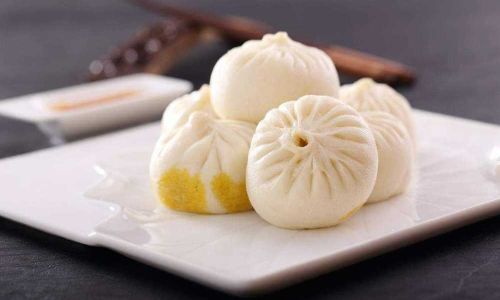
Collapsed or Shrunken Buns
Cause: Removing the buns too quickly from the steamer, causing rapid temperature changes.
Solution: Always let the buns rest for 3–5 minutes after steaming. This allows the steam to redistribute evenly and stabilizes the dough structure.
Uneven Cooking
Cause: Buns placed too closely together or inconsistent heat distribution.
Solution: Arrange buns with sufficient spacing and rotate the steamer basket halfway through cooking if your stove has hot spots.
Tough or Chewy Texture
Cause: Overkneading the dough or oversteaming.
Solution: Knead the dough until just smooth and elastic. Stick to the recommended steaming time, and avoid peeking under the lid frequently, as this releases steam and lowers the temperature.
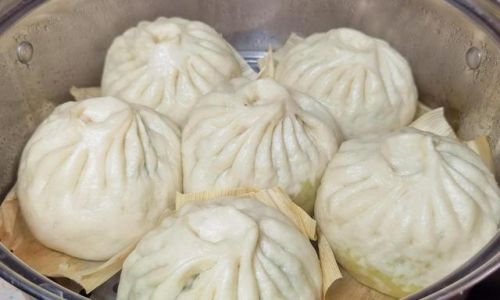
Pro Tips for Perfect Bao Buns
- Use a Steamer with a Tight-Fitting Lid: A loose lid allows steam to escape, leading to uneven cooking. Wrap the lid in a clean kitchen towel to absorb condensation and prevent water from dripping onto the buns.
- Opt for Room-Temperature Fillings: If using cold fillings (e.g., refrigerated meat), bring them to room temperature before assembling the buns. Cold fillings can lower the dough’s temperature and increase steaming time.
- Test with a Toothpick: Insert a toothpick into the thickest part of a bun. If it comes out clean (or with minimal dough residue), the buns are done.
- Reheat Leftovers Properly: Steamed bao buns reheat best in the steamer. Avoid microwaving, as this can make them rubbery. Steam for 3–5 minutes until warmed through.
Beyond the Basics: Creative Variations
Once you’ve mastered the classic steamed bao bun, experiment with flavors and fillings:
- Sweet Bao Buns: Fill with red bean paste, lotus seed paste, or Nutella for a decadent treat.
- Spicy Bao Buns: Add Sichuan peppercorns or chili oil to meat fillings for a fiery kick.
- Vegan Bao Buns: Use tofu, mushrooms, or jackfruit as plant-based protein alternatives.
- Colorful Buns: Incorporate natural dyes like turmeric (yellow), beetroot (pink), or spinach (green) into the dough for vibrant hues.
Conclusion
Steaming bao buns is both an art and a science. While the general rule of thumb is 12–15 minutes for standard-sized buns, flexibility is key. Factors like size, filling, and equipment demand adjustments, but with practice, you’ll develop an intuition for achieving the perfect texture—soft, fluffy, and bursting with flavor. Remember to experiment, embrace minor mishaps as learning opportunities, and savor the joy of creating these delightful treats from scratch. Whether enjoyed as a snack, meal, or party appetizer, well-steamed bao buns are sure to impress. Happy steaming!



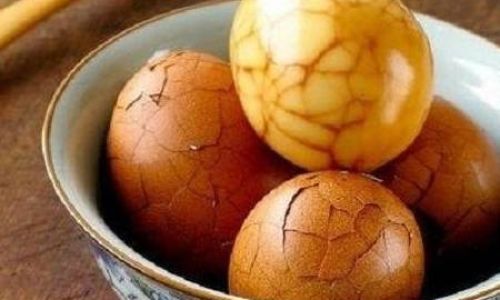
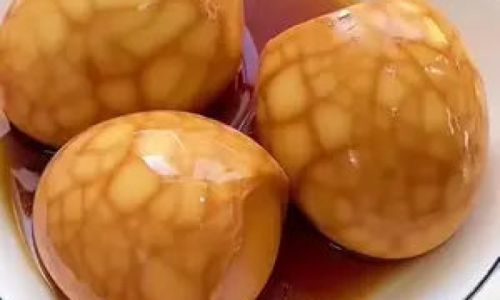
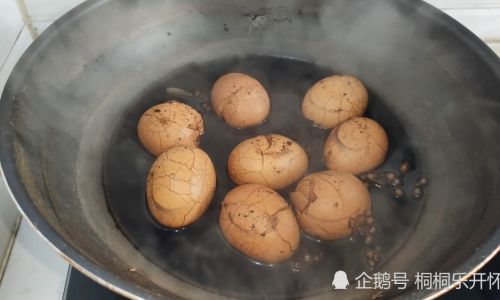
0 comments